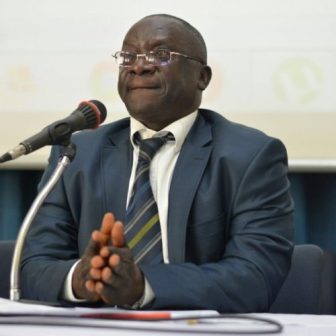PROFESSOR DANLADI MATAWAL
I listened this week, over and over, to the news of the collapsed bridge in Genoa, Italy and wondered if there are any lessons for Nigeria and cognate Nigerian Engineers and Policy makers.
The collapsed Italian bridge is government owned but privately operated and is a Cable bridge. That is lesson number One because the concessioning, from preliminary news, includes maintenance from generated income. There were planned foundation, cable and superstructural repairs when it collapsed.
The Genoa bridge carries about 70,000 passengers everyday and over 30 Vehicles were on it when it collapsed while the lives lost so far has been put at exactly thirty eight(38). Lesson number two is that bridge collapse being a very rare occurrence was least expected in Italy but this bridge had warnings from experts. The Private operating company has been blamed by the Italian Minister of Transport and their top management staff asked to resign. Lesson no.3 is that response was rapid, rescue is still ongoing as I write this short note while government has put up, instantly, the sum of US$5million equivalent (~N1.8billion) as rescue and operations fund.
So are there other lessons for my dear country Nigeria? Indeed, bridge collapse as I observed is a rare, very rare, occurrence and yet it happens. Smaller bridges have failed in this country in the Kontagora and Mokwa areas of Niger state in 2017 and 2018 on road and railway bridges and culverts. We have looked at the pictures of collapses, the vehicles that plunged into the rivers and streams and as long as we create alternative routes for vehicular flow after awhile, we are unconcerned about long term sustainable solutions. Example, NBRRI sent a team to the sites in Mokwa area in 2017 and there is a definite report and opinion but who cares? Afterall it occurred again in 2018 and NBRRI raised a team to visit again, this time with some FERMA engineers, but funding has held the team back and they will ultimately be there anyway.
Now these are small bridges and even culverts whose failure has not been unexpected because they were hydraulically under-designed and the floods simply overwhelmed them, created new channels and led to the collapse of existing structures by eroding away the soils on the sides and beneath toes of these bridges. All these hydraulic structures should have been lifted higher above the flood plains by more extensive embankments and the water openings designed and constructed to be of higher capacity. However, the Italian Genoa collapse is absolutely catastrophically structural and can Nigerian bridges be exempted from suspicion in structural integrity suspicions?
In 2016, following some public outcry, NBRRI Bridge Research team visited a certain Tamburawa bridge near Kano. A Technical report of what was discovered was released and in 2017, the Federal Ministry of Works (and Power) awarded contract for the remediation of Tamburawa bridge (for about N1.5billion, I learnt but subject to be corrected). NBRRI got the impression that other bridges needed to be studied and it is not easy to go beneath a bridge deck but NBRRI has currently completed field work on all bridges from Abuja – Kaduna – Kano using drone inspections and a report is being processed. It is revealing because it was not only Tamburawa bridge alone, afterall, that had its piles extensively exposed representing structural risk of a very high severity rating but literally all bridges on this route have now been identified to be in the same state as Tamburawa. Additionally, there is severe cracking on most of the substructural and superstructural elements of these bridges, the bearings displaced or maligned, beams distressed, etc. The logical thing is for NBRRI to immediately dispatch different teams to all routes in the country. Indeed, the programme has already been mapped out but there are serious funding and personnel shortages. Experience gained needs to be taught to other teams to perform, more field Vehicles and Drones are needed and maybe a Central coordinating unit directing studies and analyzing measurements taken from the field set up in the headquarters in Abuja.
Therefore my preliminary conclusion is that even Italy with such history of magnificent bridge and road building achievements and pride has been badly hit by the Genoa collapse and its pride bruised. However, can we say that anyone is paying attention to our bridges in Nigeria for maintenance and remediations? Huge sums being committed to roads are primarily for resurfacing only and not certain if anyone believes the bridges also need attention. Let us not forget the very immediate past experiences that we had on Building collapse that warranted a fairly energetic R&D intervention by NBRRI to reduce to a bare minimum over the years this ugly occurrences.
There is the need to allocate parallel R&D funds to NBRRI as roads and bridges are constructed. Example, when “SUKUK” funds were raised and spread on roads rehabilitation in the country, did we think that the premier cognate Research Institute (NBRRI) in the country would need some small percentage of the US$100billion(?) fund to continue to support with sustainable solutions? The Italian Genoa Morrandi bridge collapse poses serious questions to our engineering technical and policy makers and we cannot sit and fold our arms when risks of catastrophè. The Italian government has declared a 12-month emergency after this collapsed and declared that in modern society with so much technological prowess, these types of catastrophès cannot be allowed to occur. Can Nigeria take a queue and empower NBRRI to help out on its bridge R&D initiative? Surely attention is desired.
*The author, Engr Professor Danladi S MATAWAL is Director-General/CEO, NBRRI-FMST.





